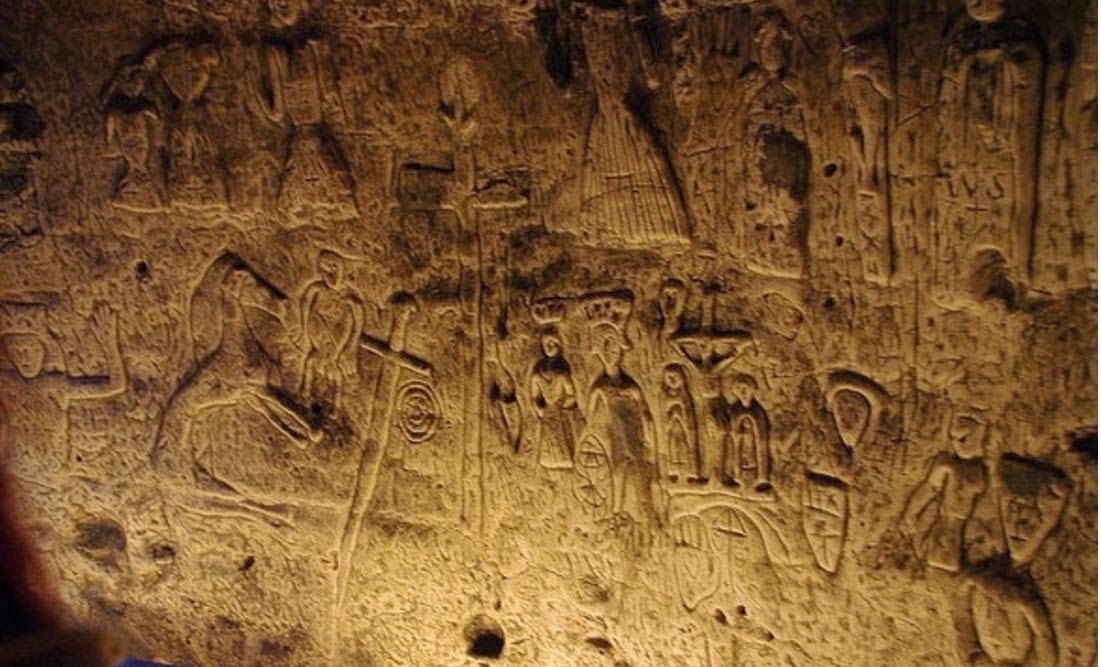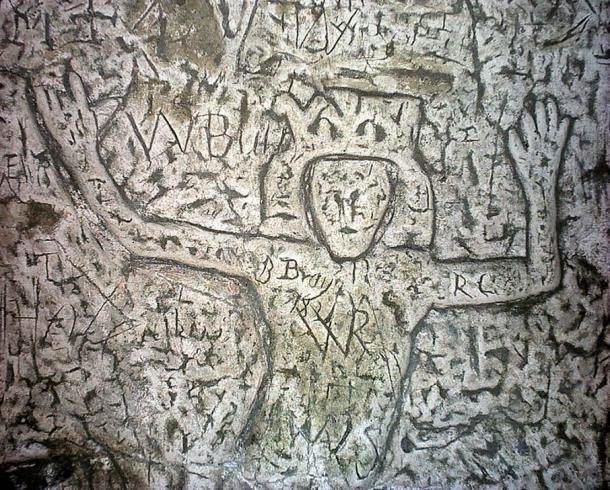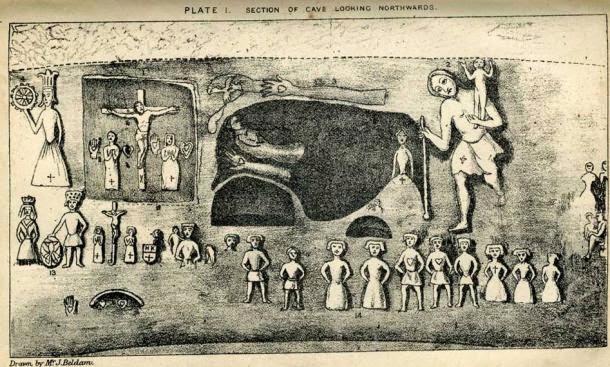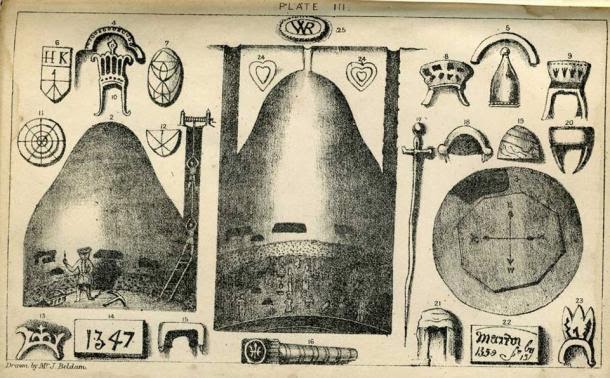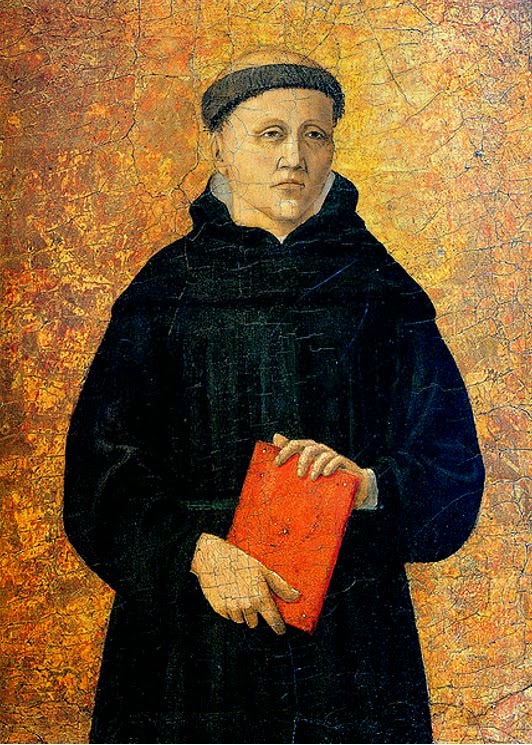| Online: | |
| Visits: | |
| Stories: |
Enigmatic symbols and carvings in man-made cave in England confound experts
Friday, December 26, 2014
Enigmatic symbols and carvings in man-made cave in England confound experts
The Royston Cave is an artificial cave in Hertfordshire, England. It is not known who created the cave or what it was used for, but there has been much speculation. Some believe that it was used by the Knights Templar. Others believe it may have been an Augustinian store mine. Another theory is that it was a Neolithic flint mine. None of these theories have been substantiated, and the origin of the Royston Cave remains a mystery.
Royston cave was discovered in August 1742 in Royston. A worker was digging holes to build footing for a new bench at a market. He discovered a millstone while he was digging, and when he dug around to remove it, he found the shaft leading to the cave. When the cave was discovered, it was half-filled with dirt and rock. Efforts were made to remove the dirt and rock, which was subsequently discarded. Some believed that treasure would be found within Royston cave. However, removal of the dirt did not reveal any treasure. There were sculptures and carvings found within. It is worth noting that had the soil not been discarded, today’s technology could have allowed for a soil analysis.
The sculptures found within are believed to be about 800 years old. It is likely that the sculptures were originally colored, although due to the passage of time only very small traces of color remain visible. The images are mostly religious, depicting St. Catherine, the Holy Family, the Crucifixion, St. Lawrence holding the gridiron on which he was martyred, and a figure holding a sword who could either be St. George, or St. Michael. Holes located beneath the sculptures appear to have held candles or lamps which would have lit the carvings and sculptures.
One of the main theories as to the origin of Royston cave is that it was used by the Knights Templar prior to their dissolution by Pope Clement V in 1312. Some believe that the cave had been split into two levels using a wooden floor. Figures near a damaged section of the cave depict two knights riding a single horse, which may be the remains of a Templar symbol. Architectural historian Nikolaus Pevsner has written that the date of the carvings “is hard to guess. They have been called Anglo-Saxon, but are more probably of various dates between the C14 and C17 (the work of unskilled men).”
Another theory is that Royston cave was used as an Augustinian store house. As their name implies, the Augustinians were an Order created by St Augustine, Bishop of Hippo, in Africa. Founded in 1061 AD they first came into England in the reign of Henry I. From the 12th century, Royston in Hertfordshire was a center of monastic life and the Augustinian priory continued without break there for nearly 400 years. It has been said that local Augustinian monks used Royston cave as a cool storage space for their produce and as a chapel.
Finally, some speculate it may have been used as a Neolithic flint mine as early as 3,000 BC, where flint would have been gathered for making axes and other tools. However, the chalk in this area only provides small flint nodules, generally unsuitable for axe making, so this may cast some doubt on this theory.
To this date there remains much mystery as to who created Royston cave and for what purpose. It is always possible that whichever group originally created the cave may have abandoned it at some point, allowing it to be used by another group. The mystery surrounding the cave and the sculptures within makes the cave an interesting location for visitors who would like to speculate as to the origins of this ancient wonder.
Royston cave has required regular maintenance and restoration, as it was discovered that insect larvae and worms were damaging the walls and structure of the cave. By August 2014, work to prevent such damage was deemed successful. Rather than using insecticides, the preservation workers removed some of the earth, thereby eliminating the worms’ food supply. Hopefully subsequent repair work to pipes to avoid flooding, and other work to prevent vibration damage from the traffic above, will help to preserve the cave into the future.
By M R Reese, Source: http://www.ancient-origins.net/





